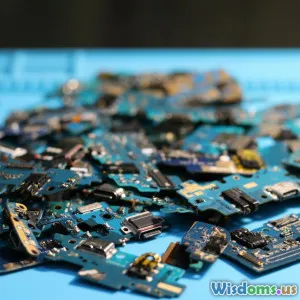
The Future of Military Robotics
7 min read Explore the transformative role of robotics in modern military operations and their implications for future warfare. (0 Reviews)
The Future of Military Robotics
As technology continues to evolve at an unprecedented rate, the realm of military operations is undergoing a significant transformation, particularly through the integration of robotics. The future of military robotics promises to reshape the landscape of warfare, enhancing operational efficiency, reducing risks to human soldiers, and introducing innovative strategies. This article delves into the advancements in military robotics, the ethical considerations they entail, and their potential to redefine modern warfare.
1. Advancements in Military Robotics
1.1 Autonomous Systems
One of the most significant advancements in military robotics is the development of autonomous systems. These robots operate independently, making real-time decisions based on pre-programmed algorithms and artificial intelligence (AI). For instance, the U.S. Navy has been experimenting with unmanned surface vessels (USVs) capable of conducting surveillance, reconnaissance, and even combat operations without human intervention.
1.2 Drones and Unmanned Aerial Vehicles (UAVs)
Drones have revolutionized military operations by providing intelligence, surveillance, and reconnaissance capabilities. Modern UAVs are equipped with advanced sensors, enabling them to gather and relay real-time data back to command centers. Notably, the MQ-9 Reaper drone can carry out precision strikes while minimizing collateral damage, showcasing how drones enhance operational effectiveness.
1.3 Robotic Ground Vehicles
Land-based robotic vehicles are also gaining traction in military applications. These vehicles can be deployed for various tasks, including bomb disposal, logistics, and transportation in hazardous environments. For example, the U.S. Army’s Multi-Domain Operations concept incorporates robotic ground systems to augment human capabilities on the battlefield.
2. Enhancing Operational Efficiency
Robotic systems are designed to enhance operational efficiency in several ways:
2.1 Reducing Risk to Human Soldiers
By deploying robots in high-risk scenarios, military forces can minimize the exposure of human personnel to dangerous situations. For instance, bomb disposal robots can safely neutralize explosives without putting human lives at risk.
2.2 Increasing Precision and Effectiveness
Robotics can significantly improve the precision of military operations. With advanced targeting systems and AI algorithms, robotic systems can execute missions with greater accuracy, leading to more effective results and reduced collateral damage.
2.3 Streamlining Logistics and Supply Chains
Robotic systems are also transforming military logistics. Autonomous delivery vehicles and drones can transport supplies to remote locations, ensuring that troops have access to essential resources without the risk associated with conventional supply routes.
3. Ethical Considerations
As military robotics become more prevalent, ethical considerations arise regarding their use in warfare. The deployment of autonomous weapons systems raises moral questions about accountability, decision-making, and the potential for unintended consequences.
3.1 Accountability and Autonomy
Who is responsible for the actions of an autonomous weapon system? This question remains a significant concern as militaries around the world explore the implications of robotic warfare. The need for clear guidelines and regulations governing the use of military robotics is imperative to prevent misuse and ensure accountability.
3.2 The Human Element in Warfare
While robots can enhance efficiency, the human element remains crucial in warfare. The ethical dilemmas surrounding the replacement of human soldiers with robots must be carefully navigated to maintain the moral fabric of military operations.
4. The Future Landscape of Warfare
The integration of robotics in military operations is set to redefine the future of warfare. As technology continues to advance, we can expect to see:
4.1 Increased Collaboration Between Humans and Robots
Future military operations will likely involve a collaborative approach where human soldiers work alongside robotic systems. This partnership can leverage the strengths of both humans and robots, resulting in more effective military strategies.
4.2 Greater Focus on Cybersecurity
As military robotics become more interconnected, cybersecurity will be paramount. Ensuring the integrity of robotic systems against cyber threats will be crucial to maintain operational effectiveness and security.
4.3 Continuous Innovation and Development
The field of military robotics is dynamic, with ongoing research and development. Innovations in AI, machine learning, and materials science will drive advancements, leading to more sophisticated and capable robotic systems in the future.
Conclusion
The future of military robotics is bright, promising to transform the way warfare is conducted. By enhancing operational efficiency, reducing risks, and introducing new strategies, military robotics will play a pivotal role in shaping modern warfare. However, as we embrace these technological advancements, it is essential to remain vigilant about the ethical implications and ensure that the integration of robotics into military operations is guided by principles of accountability and responsibility. The balance of innovation and ethics will define the future landscape of warfare in the years to come.
Rate the Post
User Reviews
Popular Posts




















